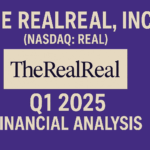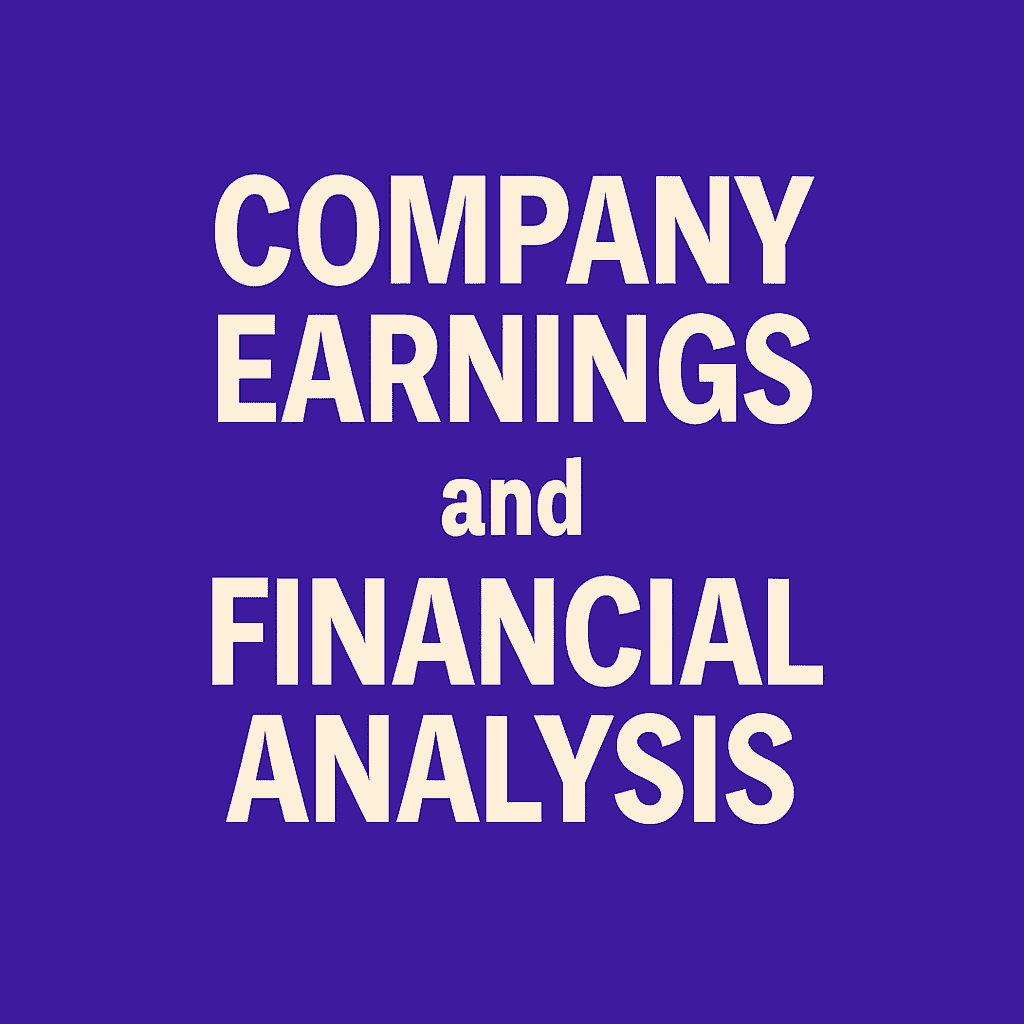American Coastal Insurance Corporation (NASDAQ: ACIC)
Q1 2025 Financial Analysis | May 8, 2025
Executive Summary
American Coastal Insurance Corporation reported solid financial results for the first quarter of 2025, achieving its target combined ratio of 65% and delivering a return on equity over 30%. The company reported consolidated net income of $21.3 million ($0.43 per diluted share), down 9.5% from $23.6 million ($0.48 per diluted share) in Q1 2024. Core income was $20.7 million ($0.42 per diluted share), representing a 15.3% decrease year-over-year, primarily due to higher policy acquisition costs resulting from a decreased quota share reinsurance coverage from 40% to 20%.
Q1 2025 Highlights
Financial Performance
American Coastal Insurance Corporation's financial performance in Q1 2025 demonstrated the company's resilience and disciplined underwriting approach. Gross premiums written increased by $13.3 million, or 7.2%, to $197.9 million for the quarter ended March 31, 2025, from $184.6 million for the same period in 2024. This growth was driven by strong account retention and selective new business production.
Net premiums earned increased by $5.7 million, or 9.0%, to $68.3 million, primarily due to the company's strategic decision to retain more of its business by decreasing its quota share reinsurance coverage from 40% to 20% effective June 1, 2024. This strategic shift had a significant impact on both ceded premiums earned and policy acquisition costs.
Total revenue increased by 8.4% to $72.2 million, benefiting from higher net premiums earned and improved investment income. However, this was partially offset by net unrealized losses on equity securities of $2.0 million compared to $0.1 million in the prior year.
The company's net loss and LAE (Loss and Loss Adjustment Expenses) decreased by $1.1 million, or 8.8%, to $11.4 million, reflecting improved underwriting results. The net loss and LAE ratio improved to 16.7% from 19.9% in Q1 2024. Notably, the company experienced no catastrophe losses in the quarter and had $2.2 million of favorable prior year reserve development, contributing to the improved loss ratio.
Despite these positive factors, consolidated net income decreased by 9.5% to $21.3 million, and core income decreased by 15.3% to $20.7 million. This decline was primarily attributable to higher policy acquisition costs, which increased by $13.9 million, or 144.8%, to $23.5 million due to the decrease in ceding commission income resulting from the reduced quota share reinsurance coverage.
Combined Ratio Analysis
| Component | Q1 2025 | Q1 2024 | Change |
|---|---|---|---|
| Loss ratio, net | 16.7% | 19.9% | -3.2 pts |
| Expense ratio, net | 48.3% | 33.3% | +15.0 pts |
| Combined ratio | 65.0% | 53.2% | +11.8 pts |
| Effect of current year catastrophe losses | 0.0% | 0.3% | -0.3 pts |
| Effect of prior year development | -3.2% | 0.0% | -3.2 pts |
| Underlying combined ratio | 68.2% | 52.9% | +15.3 pts |
The company's combined ratio of 65.0% in Q1 2025 increased by 11.8 percentage points from 53.2% in Q1 2024, but remained in line with the company's target. This increase was primarily driven by a higher expense ratio, partially offset by an improved loss ratio.
The loss ratio improved by 3.2 percentage points to 16.7%, benefiting from favorable prior year reserve development of $2.2 million and the absence of catastrophe losses during the quarter. Excluding these factors, the underlying loss ratio was relatively stable at 19.9% compared to 19.6% in Q1 2024.
The expense ratio increased significantly by 15.0 percentage points to 48.3%, primarily due to higher policy acquisition costs resulting from decreased ceding commission income. This increase was a direct consequence of the company's strategic decision to reduce its quota share reinsurance coverage from 40% to 20% effective June 1, 2024. External management fees also increased as a result of a one percent increase in the management fee agreed to in the contract renewal with AmRisc in 2024.
Despite the higher combined ratio, the company's underlying underwriting performance remained strong, with the 65.0% combined ratio aligning with management's target and supporting the company's disciplined approach to risk selection and pricing.
Operating Expenses & Policy Acquisition Costs
Total operating expenses for Q1 2025 increased by $12.1 million, or 58.7%, to $33.0 million from $20.8 million in Q1 2024. This significant increase was primarily driven by policy acquisition costs, while general and administrative expenses decreased year-over-year.
Policy acquisition costs increased by $13.9 million, or 144.8%, to $23.5 million for the quarter ended March 31, 2025, from $9.6 million for the quarter ended March 31, 2024. This substantial increase was primarily due to:
- Decreased ceding commission income as a result of the company's strategic decision to reduce its quota share reinsurance coverage from 40% to 20%, effective June 1, 2024.
- Increased external management fees resulting from a one percent increase in the management fee agreed to in the contract renewal with AmRisc in 2024.
- Higher direct written premiums, which grew by 7.2% year-over-year.
General and administrative expenses decreased by $1.8 million, or 15.9%, to $9.5 million for the quarter ended March 31, 2025, from $11.3 million for the quarter ended March 31, 2024. This decrease was driven by:
- A non-recurring employee retention tax credit refund received from the Internal Revenue Service during Q1 2025, which was previously submitted in 2022 and disclosed as a gain contingency in the company's Annual Report on Form 10-K filed on March 10, 2025.
- Reduced external spending for audit, actuarial, and legal services compared to the prior year period.
The company's interest expense remained stable at $2.7 million, consistent with the prior year period. Total expenses, including losses and LAE, operating expenses, and interest expense, increased by $11.1 million, or 30.8%, to $47.1 million for Q1 2025 from $36.0 million for Q1 2024.
Reinsurance Strategy & Costs
| Reinsurance Component | Q1 2025 | Q1 2024 | Change |
|---|---|---|---|
| Non-at-Risk | -0.3% | -0.2% | -0.1 pts |
| Quota Share | -16.2% | -31.5% | +15.3 pts |
| All Other | -41.4% | -29.3% | -12.1 pts |
| Total Ceding Ratio | -57.9% | -61.0% | +3.1 pts |
American Coastal Insurance Corporation's reinsurance strategy underwent a significant change with the reduction in quota share reinsurance coverage from 40% to 20% effective June 1, 2024. This strategic decision had several important implications for the company's risk profile and financial results in Q1 2025.
The total ceding ratio (ceded premiums earned as a percentage of gross earned premiums) improved to 57.9% in Q1 2025 from 61.0% in Q1 2024, representing a 3.1 percentage point improvement. This reduction was driven by a significant decrease in the quota share component, which declined from 31.5% to 16.2%, partially offset by an increase in other reinsurance costs.
While the quota share component decreased, the "All Other" reinsurance component increased from 29.3% to 41.4%. This increase was necessary as the company needed to purchase additional excess-of-loss coverage to replace the protection previously provided by the higher quota share percentage. Despite this increase, the replacement excess of loss coverage proved more cost-effective than the 20% quota share contract that was not renewed, resulting in an overall improvement in the ceding ratio.
The company has also made significant progress on its Core Catastrophe reinsurance program renewal, with strong demand from reinsurers to support its risk transfer needs. Management expects to announce more details about the renewal on or around June 1, 2025. Based on information provided in the earnings presentation, the company anticipates:
- Occurrence and aggregate limit to increase year-over-year
- Consolidated group retention (excluding potential reinstatements) of $29.75 million for first events, $18.5 million for second events, and $3.75 million for third events
- Flat pricing on Layer 1 (impacted by Hurricane Milton) with all other non-loss impacted layers expected to decrease by 10% to 22%
- An overall risk-adjusted cost decrease of approximately 12% year-over-year
This reinsurance optimization strategy reflects the company's disciplined approach to risk management and capital allocation, balancing retention levels with appropriate risk transfer mechanisms to protect its balance sheet while improving overall cost efficiency.
Balance Sheet & Liquidity
| Balance Sheet Item | March 31, 2025 | December 31, 2024 | Change % |
|---|---|---|---|
| Cash & Investments | $568,827,000 | $540,811,000 | +5.2% |
| Unpaid loss & LAE reserves | $256,289,000 | $322,087,000 | -20.4% |
| Reinsurance recoverable | $202,391,000 | $263,419,000 | -23.2% |
| Net Loss & LAE reserves | $53,898,000 | $58,668,000 | -8.1% |
| Financial debt | $149,104,000 | $149,020,000 | +0.1% |
| Stockholders' equity | $260,880,000 | $235,660,000 | +10.7% |
| Total capital | $409,984,000 | $384,680,000 | +6.6% |
| Financial Ratio | March 31, 2025 | December 31, 2024 | Change |
|---|---|---|---|
| Debt-to-total capital | 36.4% | 38.7% | -2.3 pts |
| Net premiums earned-to-stockholders' equity (annualized) | 104.7% | 116.3% | -11.6 pts |
| Book value per share | $5.40 | $4.89 | +10.4% |
| Underlying book value per share | $5.67 | $5.21 | +8.8% |
| Tangible book value per share | $4.06 | $3.53 | +15.0% |
American Coastal Insurance Corporation's balance sheet continued to strengthen during the first quarter of 2025, with improvements in key financial metrics and increased liquidity. Total stockholders' equity increased by 10.7% to $260.9 million as of March 31, 2025, from $235.7 million at December 31, 2024, driven primarily by retained earnings from the company's profitable operations during the quarter.
The company's cash and investment position improved significantly, increasing by 5.2% to $568.8 million from $540.8 million at the end of 2024. This increase was driven by positive cash flows from operations, enhancing the company's already strong liquidity position.
Book value per share increased by 10.4% to $5.40 as of March 31, 2025, from $4.89 at December 31, 2024. When excluding the impact of accumulated other comprehensive income (loss), underlying book value per share increased by 8.8% to $5.67. This growth in book value reflects the company's continued profitability and strong capital generation.
Financial leverage improved during the quarter, with the debt-to-total capital ratio decreasing to 36.4% from 38.7% at the end of 2024. While this ratio remains above the company's long-term target of 20% or less, the improvement demonstrates progress toward the company's deleveraging objectives.
Operating leverage, as measured by the ratio of net premiums earned to stockholders' equity (annualized), decreased to 104.7% from 116.3%, indicating a more conservative underwriting approach and stronger capital position relative to the company's premium volume.
The company's balance sheet was further strengthened by the completed sale of Interboro Insurance Company on April 1, 2025, which generated over $26 million in cash proceeds for the holding company. This transaction enhances the company's financial flexibility and provides additional resources for potential strategic initiatives.
Investment Portfolio
| Investment Category | March 31, 2025 | December 31, 2024 | Change % |
|---|---|---|---|
| Fixed Income | $303,367,000 | $301,495,000 | +0.6% |
| Equity Securities | $29,210,000 | $36,794,000 | -20.6% |
| Alternatives | $3,210,000 | $3,129,000 | +2.6% |
| Total Investments | $335,787,000 | $341,418,000 | -1.6% |
| Cash & Cash Equivalents | $233,040,000 | $199,393,000 | +16.9% |
| Total Cash & Investments | $568,827,000 | $540,811,000 | +5.2% |
ACIC's investment portfolio remains conservatively positioned, with a focus on high-quality fixed-income securities that have mitigated the impacts of Q1 market volatility. Fixed income investments represent 84.3% of the total investment portfolio as of March 31, 2025, up from 82.3% at December 31, 2024.
The company's fixed-income portfolio had a modified duration of 2.0 years at March 31, 2025, compared to 2.2 years at December 31, 2024, reflecting a slightly more conservative positioning in the face of interest rate volatility. Key metrics of the fixed income portfolio include:
- Portfolio duration: 2.0 years
- Weighted average coupon: 4.03%
- Book yield: 3.67%
- Percentage of A or higher rated securities: 88.6%
- Composite rating: AA-
The company's cash position increased significantly during the quarter, growing by 16.9% to $233.0 million from $199.4 million at the end of 2024. This increase was partially offset by a decrease in equity securities, which declined by 20.6% to $29.2 million from $36.8 million, primarily driven by first-quarter sales and market value fluctuations.
The investment portfolio is well-diversified across industry sectors, with a focus on high-quality corporate and government securities. The largest sector allocations include financial services, utilities, industrials, consumer cyclicals, and energy.
Investment income, excluding realized and unrealized gains and losses, increased by $0.5 million, or 12.4%, to $4.5 million for Q1 2025 from $4.0 million for Q1 2024. This improvement in investment income reflects higher yields on the fixed income portfolio, partially offset by the impact of portfolio repositioning during the quarter.
Strategic Initiatives & Market Position
American Coastal Insurance Corporation continues to maintain its position as the #1 market share leader in commercial residential property insurance in Florida, with approximately 4,239 policies and $660.5 million of premium in-force. The company has successfully leveraged its strategic initiatives to drive sustainable profitability and value creation for shareholders:
Reinsurance Optimization: The company made strategic adjustments to its reinsurance program, including:
- Reducing quota share reinsurance coverage from 40% to 20% effective June 1, 2024, enabling the company to retain more premium while maintaining a strong risk management framework.
- Making significant progress on the Core Catastrophe reinsurance program renewal, with favorable pricing trends and strong demand from reinsurers.
- Restructuring the Excess Per Risk (XPR) program to provide coverage on a per building basis, with decreased consolidated group retention to $4 million and increased limits resulting in single building coverage up to $65 million.
Portfolio Management: Despite a softening market environment, the company has maintained disciplined underwriting and strong portfolio metrics:
- Commercial property insurance rates in Florida softened during Q1 2025, with average premium in-force decreasing by 3.1% compared to December 31, 2024.
- Account retention remained strong at 88.4%, leading to growth in policies, premiums, and total insured values.
- Replacement costs for commercial properties have stabilized, with valuation changes on renewal business showing modest increases of 3-6% over the past year.
Capital Management: The company continues to focus on optimizing its capital structure:
- Successfully completed the sale of Interboro Insurance Company on April 1, 2025, generating over $26 million in cash proceeds.
- Improved financial leverage with debt-to-total capital decreasing to 36.4% from 38.7%, moving toward the long-term target of 20% or less.
- Increased book value per share by 10.4% to $5.40, reflecting strong capital generation from profitable operations.
The company's exclusive partnership with AmRisc Group for distribution of Condominium Association properties in Florida continues to provide a competitive advantage in the market. This partnership, combined with the company's disciplined underwriting approach, has enabled American Coastal to maintain its track record of underwriting profit every year since its inception in 2007.
Outlook & Future Priorities
While American Coastal Insurance Corporation did not provide specific forward-looking financial guidance in its Q1 2025 earnings release, management commentary and strategic initiatives suggest several key focus areas and priorities for the remainder of 2025:
Reinsurance Program Renewal: The company is actively engaged in the renewal of its Core Catastrophe reinsurance program, with significant progress reported and final details expected to be announced on or around June 1, 2025. Based on management commentary, the program is expected to feature:
- Increased occurrence and aggregate limits year-over-year
- Optimized consolidated group retention levels
- Flat pricing on loss-impacted layers and decreases of 10-22% on non-loss impacted layers
- Overall risk-adjusted cost decrease of approximately 12% year-over-year
Market Conditions: The company expects continued softening in the Florida commercial property insurance market, with:
- Modest rate decreases on renewal business
- Stable replacement cost trends
- Strong account retention rates in the high 80% range
- Selective new business opportunities in an increasingly competitive landscape
Financial Targets: The company remains focused on key financial performance metrics:
- Combined ratio target of 65%, consistent with Q1 2025 performance
- Continued strong return on equity, which was over 30% in Q1 2025
- Progressive improvement in the debt-to-total capital ratio toward the long-term target of 20% or less
- Steady growth in book value per share through retained earnings
Strategic Initiatives: Following the completed sale of Interboro Insurance Company, management has additional financial flexibility to pursue strategic priorities:
- Potential investment in organic growth opportunities
- Continued optimization of the reinsurance program to balance risk and return
- Exploration of capital management strategies, including potential debt reduction or shareholder returns
The company's disciplined underwriting approach, market leadership position, and focus on sustainable profitability position it well to navigate the evolving market conditions and continue delivering value to shareholders throughout 2025 and beyond.
Risks & Opportunities
Opportunities
Risks
Conclusion
Strengths
- Achieved target combined ratio of 65% in Q1 2025
- Delivered return on equity over 30%
- Strong account retention at 88.4%
- No catastrophe losses in Q1 2025
- $2.2 million of favorable prior year reserve development
Areas of Focus
- Higher policy acquisition costs due to reduced quota share coverage
- Softening market conditions in Florida commercial property
- Debt-to-total capital ratio of 36.4% vs. long-term target of 20%
- Increased retention levels requiring robust risk management
- Optimizing capital allocation following Interboro sale
Summary
American Coastal Insurance Corporation delivered solid financial results in the first quarter of 2025, achieving its target combined ratio of 65% and generating a return on equity over 30%. Despite a 9.5% decrease in net income to $21.3 million and a 15.3% decrease in core income to $20.7 million, the company's underlying performance remained strong, with gross premiums written increasing 7.2% to $197.9 million and net premiums earned growing 9.0% to $68.3 million.
The decrease in profitability was primarily attributable to higher policy acquisition costs, which increased 144.8% due to the strategic decision to reduce quota share reinsurance coverage from 40% to 20%. This change, while increasing short-term costs, positions the company to retain more premium and improve long-term returns. The company benefited from favorable prior year reserve development of $2.2 million and experienced no catastrophe losses during the quarter.
The company's balance sheet continued to strengthen, with book value per share increasing 10.4% to $5.40, and underlying book value per share growing 8.8% to $5.67. The sale of Interboro Insurance Company on April 1, 2025, generated over $26 million in cash proceeds, further enhancing the company's financial flexibility.
Looking ahead, American Coastal is well-positioned to benefit from favorable reinsurance market conditions, with the upcoming Core Catastrophe reinsurance program renewal expected to result in a risk-adjusted cost decrease of approximately 12% year-over-year. The company's disciplined underwriting approach, market leadership position, and focus on sustainable profitability provide a solid foundation for continued value creation throughout 2025 and beyond.
Source: American Coastal Insurance Corporation Q1 2025 Earnings Release




